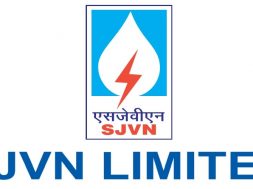
Mormugao Port’s big push for solar power – EQ
In Short : Mormugao Port has launched a significant initiative to adopt solar power, aiming to enhance sustainability and reduce carbon emissions. The port is investing in solar energy infrastructure to meet a substantial portion of its energy requirements through clean and renewable sources. This move aligns with India’s renewable energy targets, setting a benchmark for green practices in the maritime sector.
In Detail : Amidst the state government push for green energy, the Mormugao Port Authority (MPA), is readying to commission a 3 MW solar power plant which will take care of all the power requirements of the port, writes Shoma Patnaik
In a major boost for renewable energy in the state, the Mormugao Port Authority, Vasco is set to commission in February-end this year, a 3 MW solar power plant that will drastically cut down its power purchased from the Goa electricity department.
The solar project will make MPA, a solar port of India. It will be the state’s second biggest solar project after the 5 MW solar plant of the Manohar International Airport, Mopa.
MPA officials disclosed that the upcoming solar power plant located over 28,000 sq. mtr. of land, near the port, will generate 4.5 million units of electricity. They said that, the solar power plant is for captive consumption and the power it generates will be sufficient for the port and also its other facilities in the MPA township viz. the school and the hospital run by the port authorities.
The investment on the solar plant is about Rs 18 crore, which includes the project management consultant cost paid to the consultant for the project. Earlier MPA had appointed the Goa Energy Development Agency (GEDA) as the project consultant for the plant. “The project was started in March 2024. It is a capex-model project. The funds are of MPA, for which the subsidy is being provided through the Sagarmala project of the centre,” disclosed officials.
Goa’s solar energy push is constrained by an extended rainy season of four months from June to October. Officials said that, power generation from the plant during the rainy season is expected to decrease and MPA will have to make up the shortfall from the state grid.
MPAs solar plant is set over open land. For maintenance and to keep the solar panels dust-free the port plans to deploy a water jet cleaning mechanism. “The plant has 5,800 solar panels sourced from a Noida-based company. All the solar panels have been installed and the electricity transformer has also been constructed. What remains is the laying of cables from the transformer to Bogda sub-station,” disclosed engineers present at the site. To protect the plant MPA has constructed chain- link fencing around the project area. It has also signed an operation contract with an agency which is for the next 10 years.
The plant is expected to save the port Rs 3.8 crore, which is its total expenditure on power presently. It is connected with the grid under virtual net-metering mechanism. Upon commissioning it will reduce ,MPA’s annual CO2 emission by 3,807 tonns. The solar power plant is part of the Maritime India Vision 2030, and the UN convention for climate change to achieve net zero emission by 2070.
“The solar project is on track. The return on investment from it is six-seven years. it is part of the port’s plan to achieve green port status,” said officials.
Goa’s solar energy generation at nascent stage
Goa’s solar energy generation comprise ground-mounted solar plants that in 2022-23, generated only 4.7 million units (MU) of electricity as against the total consumption of around 4,430.7 MU of electricity during the year. As on March 2023, the state had total solar power capacity of 46.2 MW, of which 31.7 MW was capacity from the small solar systems installed by numerous homeowners, hotels or commercial establishments and 14.5 MW capacity from ground-mounted plants set up by industries.
Industries that have set up solar power plants include ONGC (1 MW), Pfizer, Mahindra Holidays & Resorts, United Spirits, Bethora, Proctor & Gamble, Usgaon, Sanofi India (1.8 MW), Verna, and Manohar International Airport, Mopa (5 MW.)
To encourage residential, institutional, commercial and industrial rooftop solar plants, the state gives subsidy ranging from 20 per cent to 50 per cent on the benchmark cost for installation of solar plants up to an installed capacity of 90 KW. The Phase II of the Grid Connected Rooftop Solar Programme is being implemented by the Goa Energy Development Agency (GEDA).
The state is also coming out with a hydrogen policy and net zero emission policy for industries to promote large-sized solar power plants.











